EMERALD Premiers/NY IFP MARKET, St Marks/NY, & ROTTERDAM INTL. FILM FESTIVAL. And here's details on restoration to top digital quality--out in the world now, for FREE viewing!
https://bynwr.com/posts/the-old-new-dark-ages
Experpted feom my book, NEW DARK AGES––HOW A PUNK MOVIE EMERALD CITIES GOT ITS IMPROV
EMERALD Premiers/NY IFP MARKET & ROTTERDAM INTL. FILM FESTIVAL
Once Emerald Cities was completed, in the fall of 1983, I decided to give it a sneak preview at the Strand Theatre in San Francisco, which was a repertory venue where a different film played nightly. I rented the theatre for $400 and charged $5 per person, hoping I could fill up the 750 seats, at least partially, to break even. But in my exuberance—it would be a Premiere, after all—I decided to go first class and hire a catering service to sell sandwiches, beer and wine, at a concession table piled high with the movie’s posters ($2 each). Oh, and I stupidly agreed to a $750 guarantee for that food service. Maybe you can imagine what happened. With The Mutants playing live, for a token fee of $100, and printing cost for posters, I was running over budget before the front titles rolled! Luckily, the show did gather a pretty good attendance, which barely got me clear of the $750 nut. Noticing the small pistol stuck under the belt of the Italian restaurateur, I was reminded of being out of my league as I turned over the entire pile of money.
Actor Dick Richardson paints “Green-Eyed Punkette.” ` Photo by Julie Schachter.
But aside from the disadvantage of projecting my smaller gauge 16mm movie on the Strand’s 35mm theatrical screen––going through house speakers at least got good sound––it was a satisfying night. I quickly gave up trying to sell the posters and just let them go for free.
The Mutants lead singer/writer, Freddie Fox, scolded me, “You need a manager!” after I explained the caterer had cleaned me out and he’d have to wait for the band’s in-person performance fee. Duh...Of course a punk rock audience had no extra cash for food or drinks!
————
Later that year I got an offer to show the feature at the St. Mark theatre in NYC. Although the Whitney Museum of American Art had expressed interest in doing a week-long show, which meant folded chairs in an art gallery, for maybe 20 people, like had shown up for Showboat 1988 there, I wanted the film to run in a real theatre this time. The Village Voice didn’t review it, but an ad appeared there, featuring Dick’s punkette painting from the poster, to help fill the seats. And so it did, supplying a full house each of two midnight shows, with Flipper band members in attendance, fresh from their CBGBs concerts, and also lead Carolyn Zaremba showing up (she had become a NewYorker at this point).
For some reason, before my trip to New York, I had packed my passport, which saved the day when artist Allan Adams with whom I’d been staying in his “dog pound” facility/studio in Brooklyn, informed me that the Rotterdam International Film Festival had sent me an important telegram, and that he’d meet me to hand it over. And the good word was, “We love your film.”
Earlier in September, I’d been disappointed when a friend and programmer for Sundance had told me, “I hate it—Emerald Cities––can’t stand the music!” So Rotterdam helped restore my confidence. Back then, some people just weren’t ready for Flipper/The Mutants and nuclear war in their face. But I had to love my friend’s honesty! So I looked forward to the kind of eager audiences that Rotterdam usually supplied––an early cut of Showboat 1988 had repeatedly sold out to full audiences there in 1977. I was jet-setted to Holland once again, (free flight and hotel room), thrilled to have another shot at some international exposure.
————
FLASHBACK:
This honesty issue ((like my Sundance friend giving a real response, without fake emotions) brings up a fairly hilarious encounter that I experienced in New York City during my trip there in December, 1974.
I needed to get a show (any show), to bail myself out from the $4,000 debt at W. A. Palmer Films lab for my first feature, A Man, a Woman, and a Killer. When Marc Weiss, programmer at the Bleecker St. Cinema (he became the future founder of Public Television’s POV series), decided to screen the movie for himself, to consider possibly including it in a series of other independent titles he was running that Spring, I worried that him watching the movie alone in the 150+ seat theatre wasn’t the best recipe for a successful outcome. He said he would watch it at the god-awful time slot of 11:00AM, December 26th. So I decided to increase my chances by designing and printing up some Free Admission tickets to hand out. I immediately took a subway to a printing house that I found in the yellow pages, walked in and asked to talk to someone about an order.
The office was very narrow, maybe twelve feet wide, but running out of sight down the long hallway- width office. An older man came to my aid. It was December 23rd so the specter of Christmas was everywhere––people moving frenetically, busy to finish up. I explained I needed to print up some tickets (250). He gave a good price quote––pretty cheap...like Kinko’s. I agreed to the terms, and innocently asked if there was a desk available, where I could draw out the design. After a split second of him looking blank he said, almost to himself, “He wants a desk.”
Then he repeated it much louder, making lots of heads look up. “HE WANTS A DESK!”
I was caught off-guard by this response, but he cleared it up a second later.
“I’ve worked here for 25 years and I don’t have a desk. But YOU want a desk!”
After that explosive release of energy (Christmas crunch, after all!), he indicated I could work on the surface right in front of me, if I liked.
Luckily, the tickets got printed just in time for me to hand them out around the city on Christmas Eve day. I placed tickets in a dish in the entrance of the Chelsey Hotel, others on counters at bookstores, restaurants, until most of them were distributed. The upshot was that maybe five people showed up at 11AM to see the Sneak Preview, while others, who discovered the free tickets later, wandered into the Bleecker St. theatre for the next three months, trying to get admitted free for whatever films were being screened! How funny!
————
At the Rotterdam festival I wandered around for awhile, trying to recover from jet-lag before the Emerald Cities screening. Finally, I settled into the small cafe area and grabbed a coffee. At a table across the room I saw a punk-looking couple, and went over to say hello. Maybe I could recruit a few more people for the show, I thought. It occurred to me at the time that maybe they were a filmmaking duo I’d heard of, Scott B and Beth B, but that wasn’t the case. As the somewhat craggy faced man excused himself to take a bathroom break, the attractive blond woman let me know that her boyfriend was a musician who had made ten record albums, and they were there for a movie his music was in. OK! Pretty impressive, I thought to myself.
She also mentioned that he’d received a million dollars for his collection of movie songs. I thought (and probably said), very nice for you guys. Later I heard his name, Tom Waits. Having spent so many years in the dungeons of editing rooms, I had no knowledge of Waits amazing music and well-deserved fame, until a later event at the festival revealed his special talents. Before his companion left the table, I plugged my film showing and she wrote down “Emerald Cities,” then gave me their contact information: an LA address and phone number.
I kept bumping into Tom in Rotterdam, and got some good warm feeling from him (temporary expats and all). I think he liked me around because I wasn’t fussing over him at all, which others might have done. If you're famous, I’m sure you can quickly sense that people’s vibe is a little weird when they recognize you). But when he and I appeared at the doorway of a larger room with a piano in the distance, the cheers suddenly went up for him. People were calling out “Ol’ 55” and other titles of his songs. There was a point when he just looked over at me, and with a special glance he communicated that, perhaps sadly, I would now know him as something more than just a fellow American hanging out at a film festival.
Fortunately, my Emerald Cities screening went well, with a couple of important UK programmers sitting with me in the full audience. They gave me some congratulatory pats on the bck afterwards, which nicely led to a future show in London, at the Everyman Theatre programmed by Liz Wrenn. After the festival wrapped up and I returned home to Oakland, the UK reviews rolled in. One I quite liked, seemed to hit the mark:
“EMERALD CITIES features Ed Nylund as an alcoholic, part-time Santa who runs a cafe in Death Valley with his actress daughter (Carolyn Zaremba). When the daughter runs off to San Francisco with a punk (Ted Falconi of FLIPPER), Ed follows. He encounters a politician who wants the country to be one big National Park with himself as head ranger (Lowell Darling), an ex-con in a Martian mask (Dick Richardson), punk rock bands FLIPPER and THE MUTANTS, politicians and priests justifying limited nuclear war as manifested on TV, including street interviews (by Willie Boy Walker) about the death of Santa Claus. Although the more bizarre components make this film excellent late night fare, with its allusions to mass media and the health of the nation, it’s much more than just a freak show. Or is it?”
–– Jo Comino, CITY LIMITS (LONDON)
At the time of Emerald Cities release (1984), few film programmers in the US had the ability to enjoy a movie with punk rock bands blasting loudly that “We Need a New Drug,” rubbing their nose in possibly imminent nuclear war, and a reminder that something went horribly wrong in a place called Love Canal (FLIPPER’S song_. But brave Midwest programmers Bob and Judy Pest, of the Kansas City, MO City Movie-Center took the challenge, and we got an interesting review from the local film critic.
“As film makers go, Rick Schmidt is right out there on the edge. Average Midwestern movie fans, if confronted by one of Mr. Schmidt’s cinematic visions of lunacy, would no doubt be prompted to ask questions such as, ‘What’s it mean?’ Such questions are pointless. The best thing to do is sit back and let Mr. Schmidt’s films do what they will. The director likes to slap his audiences around, amuse them, confuse them, toy with them, and leave them with indelible images.
Mr. Schmidt’s 1983 film, EMERALD CITIES, mixes images of nuclear destruction, the death of Santa Claus, desert isolation, real and fictional politicians (who all seem equally deranged in the film’s context) and punk rock despair in a strange pop-cultural odyssey. It’s all held together by a satirical narrative that savages most of the conventions of American life.”
—Robert C. Trussel, KANSAS CITY STAR
————
The final good pieces of the ‘EMERALD CITIES’story is THE COMPLETE DIGITAL RESTORATION (story below), and now being WATCHED ONLINE (and reviewed at LETTERBOXD site.————Tale a look at the movie for yourself, HERE.
Notes from The Restorationist BY PETER CONHEIM
Director Rick Schmidt is best known for his book, Feature Filmmaking at Used Car Prices, which he first published in 1988, when some crazy people were actually starting to make feature films on consumer-grade videotape and getting away with it, while Schmidt was teaching how to actually pull it off using good ol’ 16mm film for not that much more money.
A film like his Emerald Cities, though, is a perfect example of ultra-low-budget economy that is never precious about it – it’s technically clean and basic, showing his ease and craft, and never playing its cheapness for laughs, while still never letting you forget you are seeing something way out on the margins, something barely able to exist, just able to be created.
And so it followed that Schmidt was just as careful and deliberate with his materials over the years, and never sold out to some lame distributor who would force him to make cuts (or lose his negatives). When we approached him about working on Emerald Cities, the Restorationists were most hoping that he would still have the original magnetic soundtrack mix in his possession, so that we could bring the soundtrack to life in the digital realm in a way that his original 16mm release prints never would have been able to. And sure enough, he did.
He also still had the perfectly preserved original camera A/B negatives from the film. This meant that we were able to scan them in to the 2K digital format and reassemble the film, shot by shot, exactly as his original 16mm prints had been made in 1983, but with the advantage of not losing a generation of photochemical processing and film exposure. The result is a much sharper, gleaming Emerald, almost as if you are seeing the original negative projected in reverse. Colorist Andrew Drapkin used Schmidt’s 16mm release prints as a guide for his color scheme in his timing.
In addition to the original magnetic soundtracks being able to be utilized to bring much more fidelity to the soundtrack, we were thrilled to have Schmidt discover the original ¼” and ½” analog audio tape masters of the live Mutants and Flipper performances recorded for the film in 1980. Red Channels Studio restored these tapes, and we were able to combine them with the magnetic mixes to really make the musical segments shine.
Because the original music tracks were located, there was the option of mixing music in the film into stereo sound, but this was something the Restorationists immediately discarded – doing so would have created an alternate universe that the film simply could never have logically existed in in 1983. There was absolutely no stereophonic 16mm film exhibition at that time, and even major theater Dolby Stereo wasn’t fully embraced by all cinemas. We think that having the music suddenly jump into stereo would have taken the viewer out of the film, a choice which has been made in certain other reissues and so-called restorations in the past. We’re leaving it the way it was, only a lot cleaner and with far greater detail. This, too, might be considered “Restorationists’ license,” but that’s one we’re willing to take.
Peter Conheim is a musician, multimedia artist, film historian and lead ‘Restorationist’ at byNWR based in El Cerrito, California. He is also the co-founder of the performing group Wet Gate, which uses only “found footage” and 16mm film projectors to create a live cinema collage, sampling the sound from the film tracks in real time, as well as Mono Pause, a long-running “Situationist rock” group (and its Southeast Asian music spin-off, Neung Phak) and a member of “culture jamming” legends Negativland. His Cinema Preservation Alliance non-profit organization is dedicated to the long-term survival of endangered motion pictures of all stripes.
————-




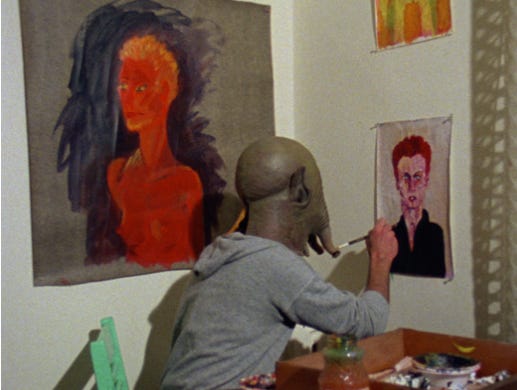
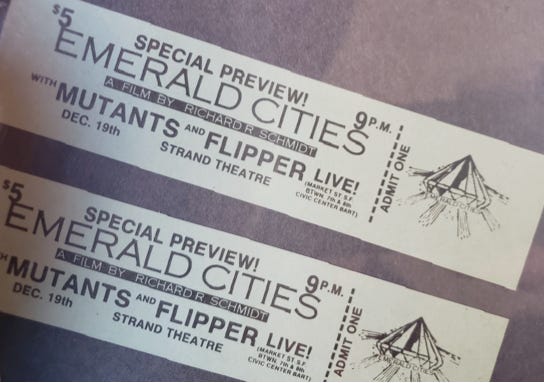
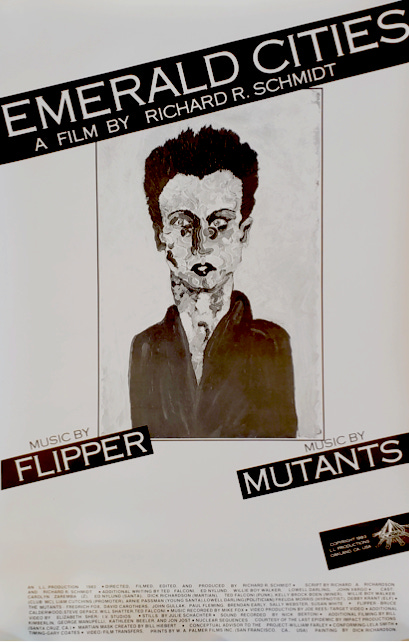
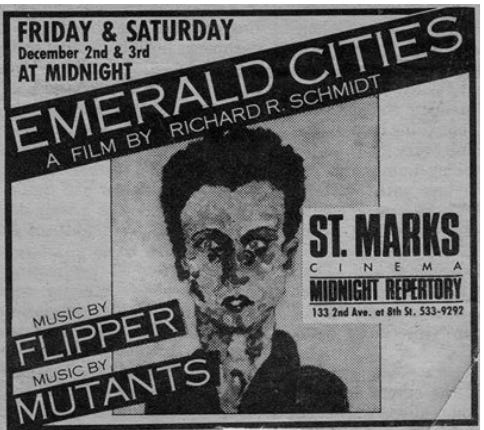
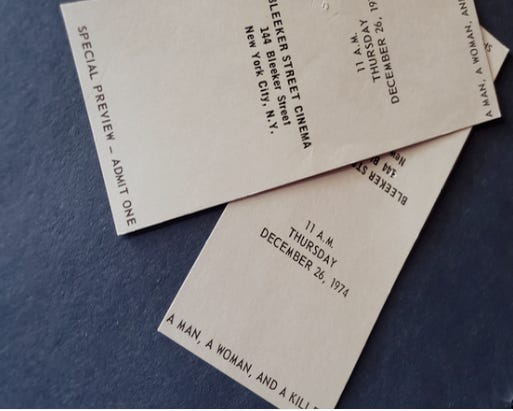
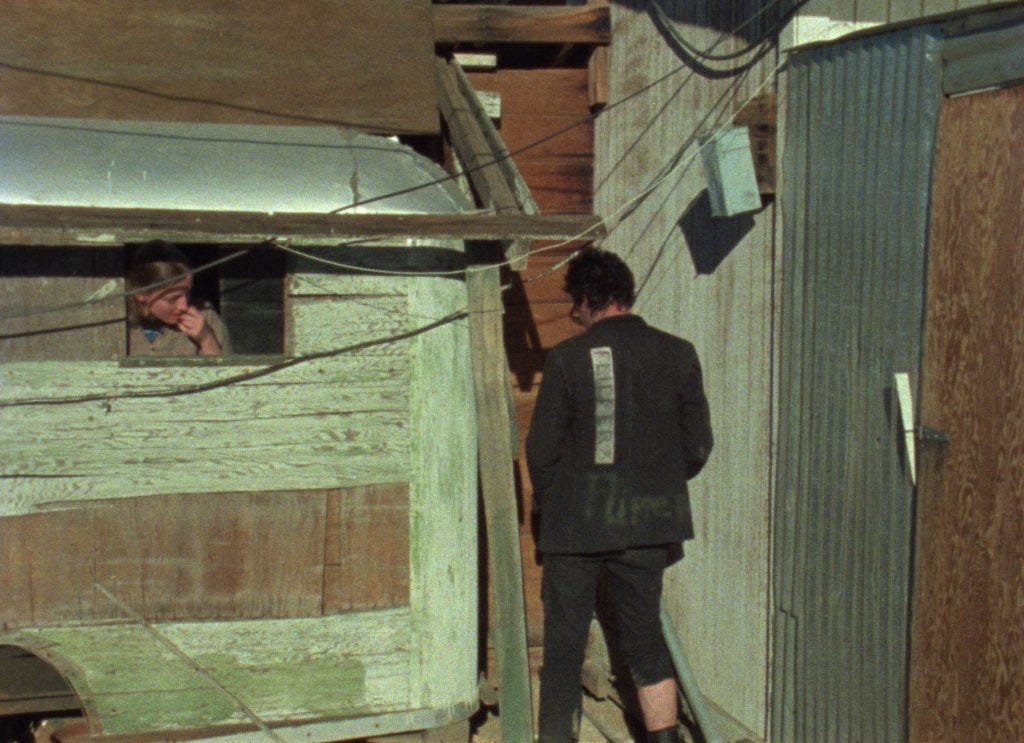
Thank you Rick for your fast and positive reply! It's thanks to NWR that I had the pleasure to watch EMERALD CITIES and find a lot of information about the shooting (as well from your Substack's). I'll be happy to let you know how the public screening went in Bordeaux. Cheers! Bertrand
Dear Rick, I'm writing from Bordeaux. Yes, your work is known and appreciated even in France (at least by me). I even own a copy of 'Feature Filmmaking at Used-Car Prices', that is to say. I would have the project to show EMERALD CITIES on Dec. 6th (St Nicolas) to a bunch of filmbuffs of my acquaintance, not in a cinema but in an artist' studio and I think it's more courteous to ask your permission to do so. It's not a commercial operation, just an opportunity to bring together lovers of American independent cinema and a few Flipper fans. So I'd be delighted if you'd give me your permission to organize this little gathering. You can reply me directly at cinemaki (at) free (dot (fr) and of course I remain at your disposal should you require any further information on this forthcoming event. Sincerely yours, Bertrand